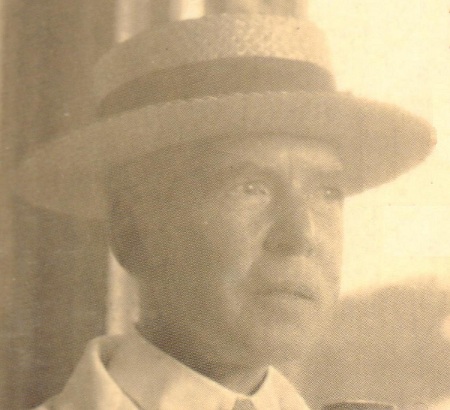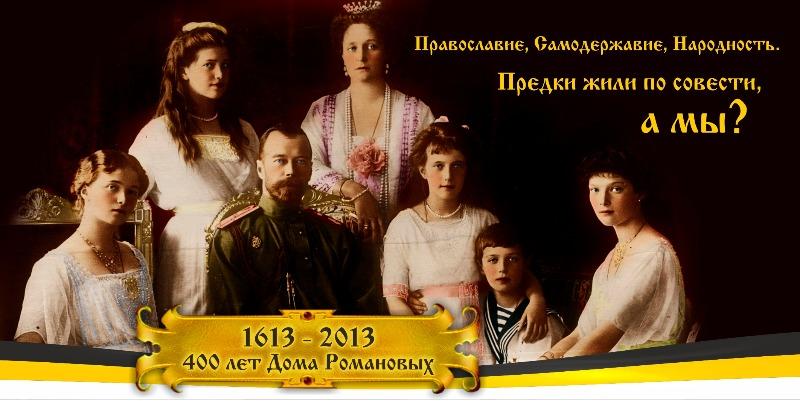Tell them that the evil that is in the world will grow, but it is not evil that will triumph, but only love.
Holy Tsar-Martyr Nicholas II
The Emperor and Empress thought that they were dying for their Homeland. In fact, they died for all mankind.
Pierre Gilliard
Introduction: 1917 the Turning Point
It is often said that the world was lost with the outbreak of the First World War in 1914. This is not accurate. In fact, the world was lost in 1917 and since then has been plunged into suffering and continual warfare. For the real aim of the First World War, the aim of the Satanic Manipulator behind all the petty aims of his human puppets, was not to find a solution to the tribal, territorial disputes of kindred but rival peoples at the tiny, western end of Eurasian Continent, but to destroy the vast Eurasian Russian Orthodox Empire and its Tsar. This Heartland-Empire stood for the averting of wars, spiritual life, unity and balance; therefore it had to be slandered so that it could be destroyed. It alone stood in the way of what the technologically advanced but spiritually dwarfed Western peoples chose to describe as ‘universal progress’. This ‘universal progress’, since 1917 unchecked by the Russian Empire and its Tsar, is the history of all the wars and catastrophes of the last 100 years.
Above East and West
The symbol of the vast Russian Orthodox Empire, the double-headed eagle, combined East and West. This was and is the symbol of Christ worldwide. Thus, with its western borders peaceful and stabilised for many years, the Tsar and the Empire embarked on the Great Asian Plan to secure the Pacific coasts of Siberia, ensuring the security of Mongolia, Manchuria, Korea and fragile China against rapacious Japan with its British and American financed military machine and British-built Navy. It was this Japan that stabbed the Empire in the back, as, ironically, it later did America and Britain. Elsewhere in Asia the Empire supported the sovereignty of Afghanistan, Tibet and Siam (Thailand), and in Africa, Ethiopia and South Africa. And, most importantly, it supported the Orthodox Christians of Eastern Europe, the Balkans, the Middle East and especially the Holy Land. The Empire stood above and united East and West; it was universal, which is why our own salvation is in her salvation.
Above Left and Right
The Sovereign Monarch towered above the petty combats of self-interested political parties and the vainglorious personality politics of corrupt parliamentarianism. Only the Anointed Sovereign had a vision beyond left and right and saw the whole. Only he was strong-willed and independent enough to reign and responsible to God for the well-being of the Empire. He had to fight both against leftist terrorists and decadent and hugely wealthy aristocrats, including members of his own extended family. These latter, because they already had immense riches which their hard hearts would not give to the poor, wanted the power of the Sovereign for their own futile and vainglorious ends, and so overthrew the whole Empire, whose destiny was also that of the betrayed Tsar. Thus, they handed all to the ruthless and terroristic atheists, who thought that they could create a paradise on earth if only they could seize power by violence, however many millions they might have to kill in the process.
Above Provincialism and Degeneration
The best of the Church of the Russian Orthodox Empire was international, stretching around the world into the Americas and Western Europe. It stood above petty Balkan nationalism and its provincial Greek phyletism, not to mention the warring tribalism of Western Europe, which the Empire had tried to overcome with peace-making at the Hague. The Orthodox Rus’ of the Empire was international. The aims of the First World War that had been imposed on the Empire became to free others, Germans, Poles, Czechoslovaks and Serbs, from centralised tyranny, and to gather all the Orthodox Christian lands, including Constantinople and Carpatho-Russia, together. The Royal Family, European and Orthodox, stood above such provincialism and the spiritual and so moral degeneration linked to it. The family life of the Sovereign was exemplary and showed elegance, purity and beauty, a model for family life today; they prayed together, they became saints together, an icon of the family.
An Unbalanced World led to the ‘Balance of Terror’ of Left and Right
In 1917 the traitors took Russia out of the First World War and so the world became unbalanced. The old hope of Nicholas II of allying Russia, Germany and France in peace was for ever lost. And the immediate results were the USA entering the war, taking over decadent Europe, and Zionism triumphing with the support of the bankrupt British government. This has since ensured permanent warfare between the West and the Muslim world. The result was then the disaster of Versailles, which directed its vengeance against the misled German peoples, who had lost their homelands, instead of the centralising Prussian elite. Europe did not learn the lesson of its attempted suicide and so the Second World War was made inevitable. The world became divided between Left and Right, East and West, Communist and Fascist, and even after the Second War, it went on to live for almost another fifty years in terror of being obliterated by nuclear warfare, the costs of which were bankrupting.
Provincialisation and Degeneration
Two sayings state that ‘united we stand, divided we fall’ and ‘divide and rule’. The ‘Balkanisation’ of division has been exactly the policy of today’s anti-Orthodox Powers. Thus, Constantinople, like other ancient but tiny Patriarchates, has since 1917 become a Western-controlled puppet and the once Orthodox or partly Orthodox Greece, Cyprus, Romania, Bulgaria, Baltic States, Slovakia, Hungary and Poland have now lost their sovereignty and enslaved themselves to EU colonialism and economic, spiritual and so moral degeneration. Today the heavily Polonised, heavily Uniatised, Galician-centred westernmost borderlands, the western 20% of the ‘Ukraine’, for the moment belonging to the real Europe of Orthodoxy, seek slavery to the same, false, anti-Orthodox ‘Europe’ of the US-founded ‘European Union’. The broken family life of the provincial and degenerate EU is anti-exemplary and shows vulgarity, impurity and ugliness; it is an anti-icon of the family.
Conclusion: Treason and Cowardice and Deceit
The Tsar-Martyr, from whom the elite and then the people abdicated, said: ‘All around – treason and cowardice and deceit’. These are the anti-Trinity that destroyed the Russian Empire and led to his triumphal martyrdom and that of millions of Russian Orthodox Christians. Tsar Nicholas faced the treason and cowardice of unprincipled, anti-Orthodox aristocrats, who had lost their faith, and of left-wing terrorists, and the deceit of the Western Powers who, Allies on paper, rejoiced at his downfall. However, all have been punished: the left-wing terrorists betrayed and killed each other; the faithless, anti-Orthodox aristocrats were shot, exiled and chose schism; and the Western Powers, colonised by their colonies, deceived themselves and are now dying powerless. None of the above three groups has so far been able to recognise the Tsar as a saint, for to do so would mean repenting for all their errors and lies of the last 100 years and more – and they are too proud to do that.

 Charles Sydney Gibbes, for short Sydney Gibbes, was born 137 years ago, on 19 January 1876. In the 19th century this was the feast day of St John the Baptist, the voice that cried in the wilderness. His parents were called John and Mary – more English than that you cannot find. His father was a bank manager in Rotherham, just outside Sheffield, in Yorkshire. Amusingly, this would later be recorded by a Russian civil servant on Sydney’s residence papers in Russia as ‘Rotterdam’.
Charles Sydney Gibbes, for short Sydney Gibbes, was born 137 years ago, on 19 January 1876. In the 19th century this was the feast day of St John the Baptist, the voice that cried in the wilderness. His parents were called John and Mary – more English than that you cannot find. His father was a bank manager in Rotherham, just outside Sheffield, in Yorkshire. Amusingly, this would later be recorded by a Russian civil servant on Sydney’s residence papers in Russia as ‘Rotterdam’.